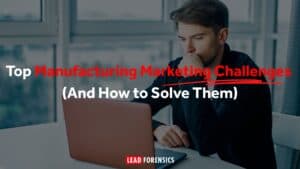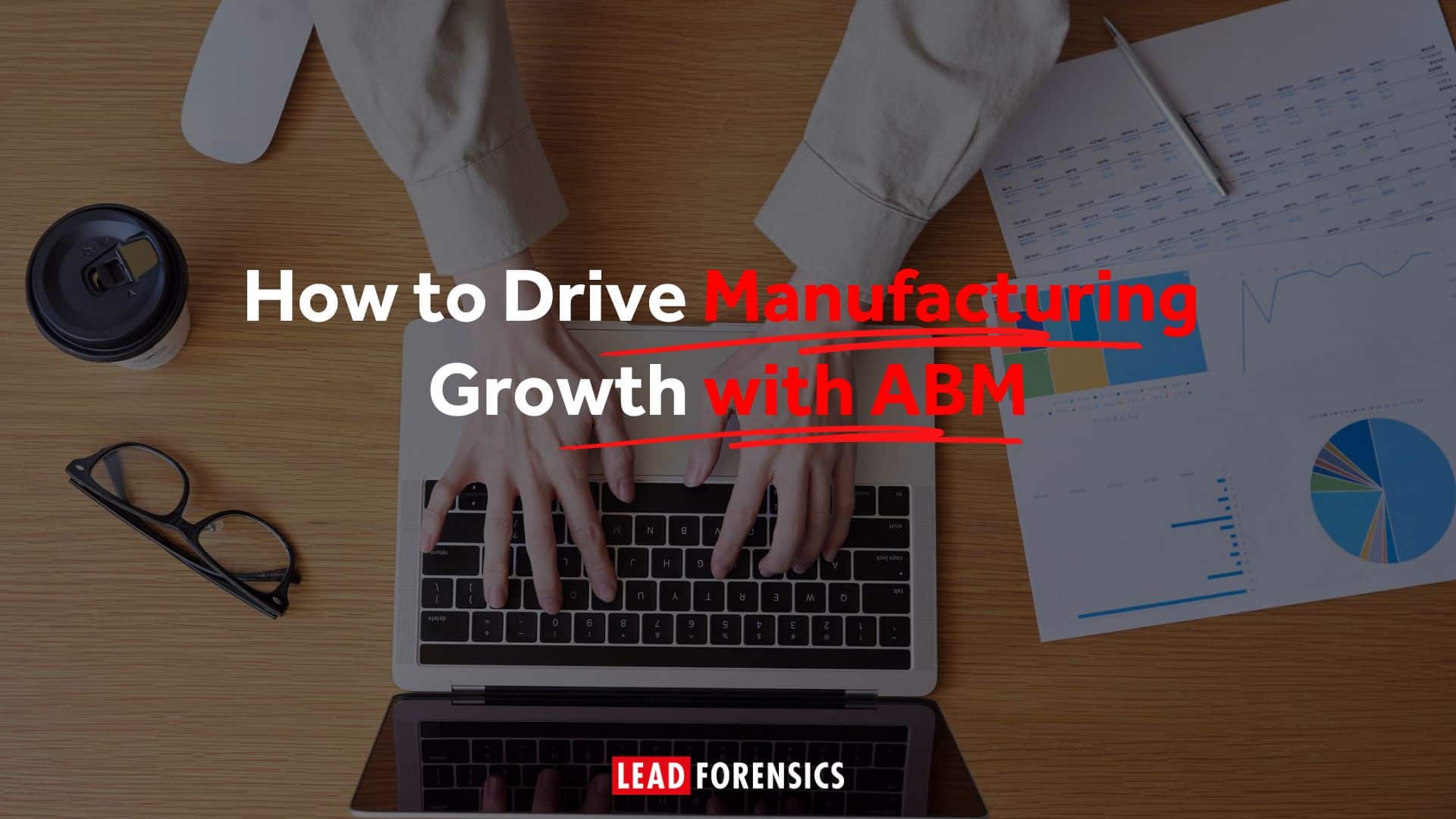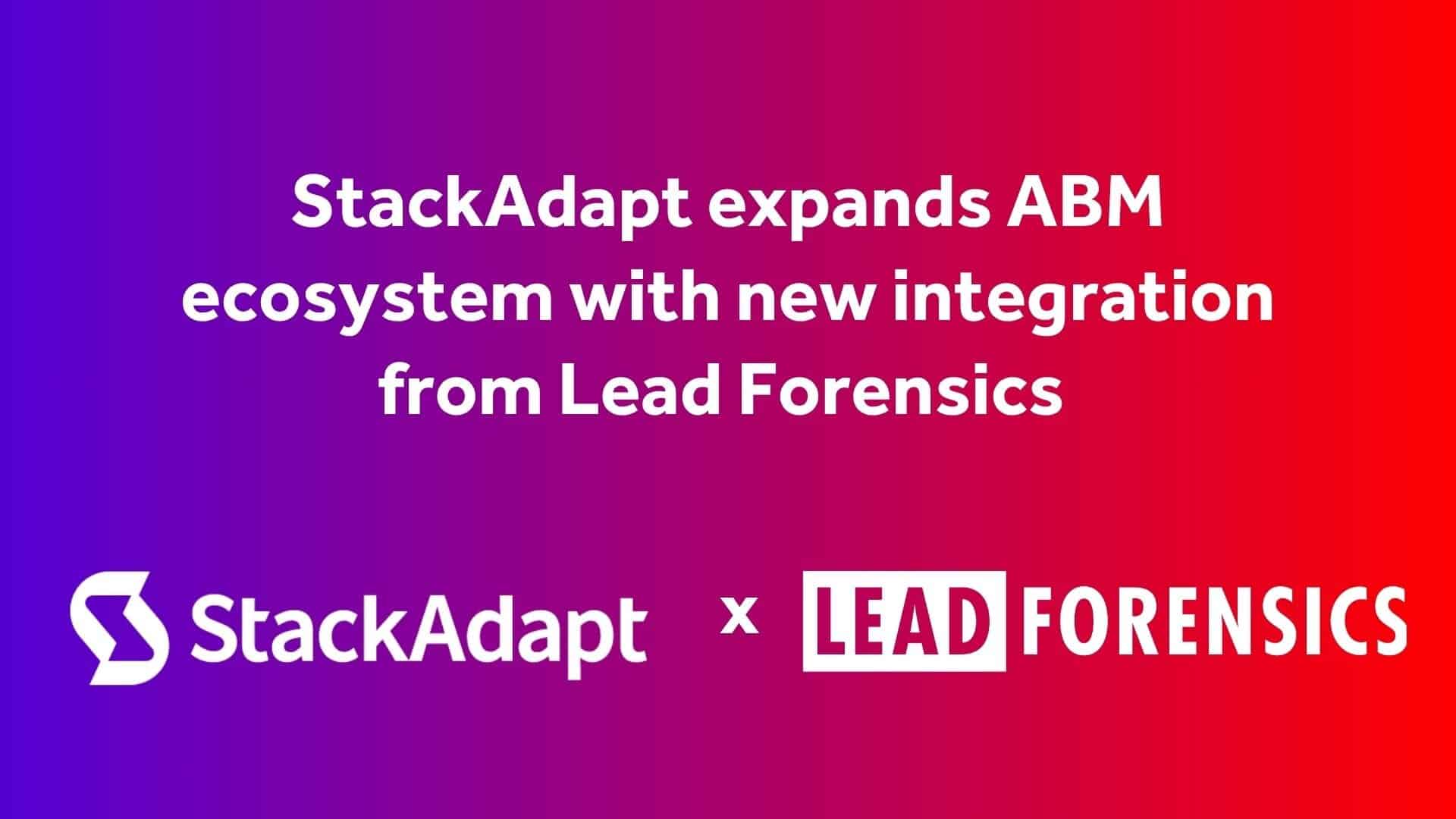In a recent Lead Forensics webinar, LinkedIn Ads expert Philip Ilic shared a proven blueprint for turning ad spend into sales pipeline. Forget outdated tactics like gated PDFs and bloated awareness campaigns. Philip walks through how to structure campaigns that win early, educate consistently, and prove ROI every step of the way.
We’ve summarized the webinar with this full-funnel framework you can implement today to make your LinkedIn budget work harder and finally tie clicks to closed-won revenue.
Full-Funnel Blueprint: Capture Demand Then Create It
Philip structures campaigns into three funnel stages, each with its own goal.
At the bottom of the funnel, which can also be called demand capture, the aim is to convert the small percentage (often ~2–3%) of your market that is already actively evaluating solutions.
He advises launching simple ads here first to score quick wins: for example, single-image sponsored content ads driving to a demo booking page or LinkedIn lead-gen form. As he puts it, “you will get some early wins” by activating this existing demand, which helps build momentum and credibility for the campaign.
In practice, this means testing campaigns like:
- Sponsored Content + Lead Form. A straightforward image ad with a clear “Request a Demo” call-to-action and a LinkedIn lead-gen form, or a Conversation Ad with a simple chat-style invite. These can be set up in a day and start generating demo requests immediately.
- Website Conversion Ads. Run parallel ads to a landing page on your website. You can A/B test a landing-page path against a lead-gen form journey to see which converts better – but the lead gen forms typically win for volume. That’s because they remove landing-page friction and let you test messaging cheaply.
These demand-capture campaigns are quick to launch and give you early metrics to justify budget.
As Philip advises, “I like to turn that cog on as early as possible” to prove LinkedIn works.
Once you have confidence – and data – you can roll out the winning formula to the rest of the funnel.
Nurturing Leads: Demand Creation with Content
For the remaining ~98% of your target audience that isn’t yet ready to buy, the focus should shift to education and branding.
In the mid-funnel, also called demand creation, Philip advises that we “think more like content strategists rather than performance marketers”. This means delivering value through tailored content, not just pushing demos.
There’s a lot you can try with mid-funnel LinkedIn ad campaigns. The first is to think in content themes.
Break your message into three buckets:
- Social proof, with content like client case studies, testimonials and success stories.
- Features and benefits content that outlines how your product works and solves customer problems.
- Educational and thought leadership content, such as insights or research useful to decision-makers.
As Philip explains, “These are the kind of stuff people really need to know”. Covering all three ensures you build trust and credibility over time.
You can also experiment with diverse ad formats and test things like carousel/docs, videos, and single-image posts to keep content fresh.
One high-leverage tactic is LinkedIn Lead Ads (boosted personal posts) that let you promote organic posts from company staff in the feed. This plays to the fact that people like to buy from people, not companies. For example, you can ask your B2B sales or product experts to publish a short insight on LinkedIn, then boost that post as an ad. You’ll hit the same accounts with a more authentic message.
Another type of content to explore is employee advocacy, where you encourage your team to post and share content organically. This generates free visibility and impressions that you can then amplify with ads.
As Philip said: “some of the best strategies happening right now… are getting a bunch of people from your company to post organically… and then we can… boost them to the exact ICP”.
In other words, let your employees spark interest, then use LinkedIn’s precise targeting to send those posts to the right decision-makers.
Don’t forget to experiment with your retargeting, too. Philip recommends you maintain an 180-day retargeting cycle for mid-funnel content. Each piece of content an account sees helps familiarize them with your brand, but it usually takes many touches before a deal. Use Lead Forensics or another website visitor identification tool to tie these multi-touch sequences into pipeline later.
Targeting, Bidding, and Creative Best Practices
When launching your campaigns, avoid these common pitfalls:
- Make sure you disable LinkedIn’s Audience Network immediately. This ensures your spend reaches decision-makers in the LinkedIn feed, not random network sites with poor conversion rates.
- Match your budget to your audience. Don’t allocate a tiny budget to a huge, broad audience (and vice versa). Ensure your daily budget scales with your audience size; otherwise, LinkedIn may overspend or under-deliver.
- Avoid the “Max Delivery” option if you’re doing manual bidding, to help control costs. Manual bids let you optimize your CPM more precisely, which drives better ROI.
- Use personalized creative. Static product ads often underperform. Instead, feature employees or customers on camera, use real testimonials, or simply talk about customer results. Keep images and messaging aligned with the content bucket (social proof, etc.) for consistency.
Measuring and Attributing ROI
Driving leads is one thing, but proving revenue is another. Thankfully, there are ways to tie LinkedIn ads back to ROI:
- Use the LinkedIn Conversion API. This links ad exposure to actual sales outcomes, so you can report on how many deals started with or were influenced by a LinkedIn ad.
- Use multi-touch attribution and lean into marketing analytics (like Lead Forensics visitor tracking) to capture these touchpoints. Many companies under-measure content’s role, so you may need to stitch together view-through conversions and CRM data to tell the full story.
- Think about the halo effect of your campaign and remember that content ads support deals even after lead gen. A prospect might book a demo, but continued ad exposure can accelerate pipeline and help the sale close. Keeping ads on new demos or opportunities can warm the buyer throughout the multi-week sales cycle.
- Report on your pipeline influence by creating dashboards that show ad-influenced opportunities, not just last-click leads. If you can show leadership that a chunk of closed-won deals saw multiple LinkedIn ads first, the ROI becomes undeniable.
Tip: Turn LinkedIn Clicks into Real Pipeline
Lead Forensics helps B2B marketers connect the dots between anonymous ad clicks and closed deals. Book a personalized demo to see how our platform tracks campaign influence across the funnel, reveals high-intent accounts, and gives you full visibility into marketing-driven revenue.









